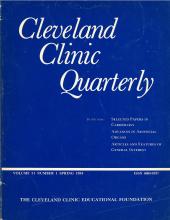ABSTRACT
During a 19-month period, 60 patients underwent 86 procedures resulting in sustained ventricular tachycardia (VT). Pacing restored sinus rhythm in 45 procedures (52.3%). Cardioversion was required in 34 procedures (39.5%). Ventricular tachycardia was self-terminating in 7 procedures (8.1%). No procedural complication occurred. The relationship of cycle length to termination mode was assessed in 20 studies in which VT did not accelerate. The average cycle length of VT terminable by pacing was 369 msec; that of VT requiring cardioversion was 298 msec (P < 0.05). Seventy-one studies provided precise intervals of inducement and termination of stimuli. Cardioversion was needed in 0/6 studies when VT was induced with sensed single or double stimuli; in 2/ 9 studies (22%) in which VT was spontaneous, catheter-induced, or induced by atrial pacing; in 3/8 studies (38%) induced by paced single stimuli; in 16/39 studies (41%) induced by paced double stimuli; and in 6/9 studies (67%) induced by burst pacing (P = 0.31). Follow-up disclosed that 44/55 patients (80%) were alive at two days to 23 months after VT induction, with 7 deaths in the first six months. We conclude that: (1) VT induction is a safe procedure regardless of termination mode when meticulous technique is exercised; (2) termination by pacing may become less likely as the rate of VT or complexity of inducing stimuli increases; and (3) mortality is highest in the first four months after stimulation of sustained VT.
- Received August 1983.
- Accepted December 1983.
- Copyright © 1984 The Cleveland Clinic Foundation. All Rights Reserved.






